L-Py Turtle advanced primitives¶
Using PlantGL primitives¶
Drawing PlantGL shapes¶
In order to draw more complex but predifined shapes, certain methods use PlantGL primitives These methods are ~ and @g. @g draws the PlantGL shape in argument. ~ is more complicated, it takes in argument a geometric shape saved in the Turtle. A special primitive is already predifined : ~l. It draws a leaf.
Axiom: ~l #(Fig. A)
Axiom: @g(Sphere(radius=3)) #(Fig. B)
execContext().turtle.setSurface('t',Sphere(radius=3))
Axiom: ~t(5) #(Fig. C)

|
Miscellaneous¶
In this section, several less common tools can be found.
Elasticity and Tropism¶
One can add an elasticity property to a branch using @Ts or Elasticity. The value in argument should be between 0. and 1.
Axiom: FF[Elasticity(0.5)+F+F]F[-F]F #(Fig. A)
A particular tropism can be setted using @Tp or Tropism. It takes a vector in argument.
import numpy as np
v = np.array([0,1,2])
Axiom: FF[Tropism(v)+F+F]F[-F]F #(Fig. B)
SectionResolution¶
SectionResolution allows to change the resolution of all following shapes. Be careful ! If the resolution is too low, the program may not work properly.
Axiom: F SectionResolution(4) +F@O(0.5) #(Fig. A)
Axiom: F SectionResolution(60) +F@O(0.5) #(Fig. B)
Download the example : resolution.lpy
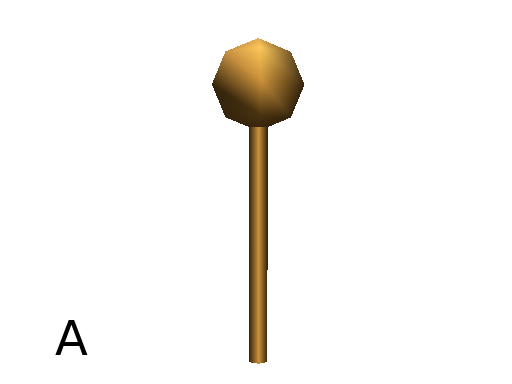
|
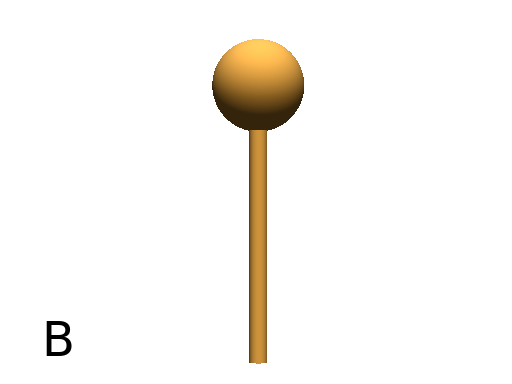
|
ScreenProjection¶
After using @2D (or StartScreenProjection), the following shapes will be drawn on the screen coordinates system (in two dimensions). The examples below belong to the same axiom, only the camera’s orientation is different. It confirms that the shape is in the screen system.
Axiom: Frame @2DF(0.6)@O(0.2)
Download the example : screen.lpy
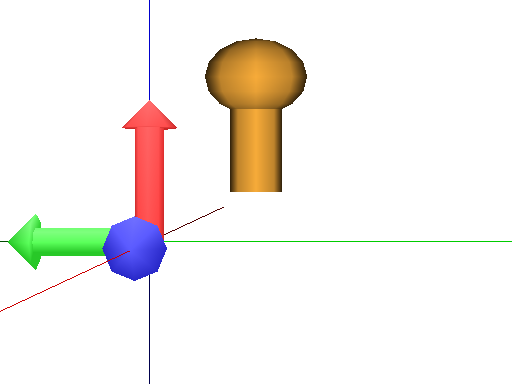
|
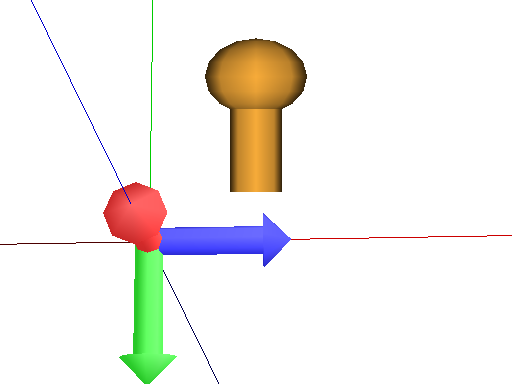
|
To switch back to the original coordinates system, @3D (or EndScreenProjection) can be used.
InterpolateColors¶
There is an other way to color shapes using InterpolateColors. This method mixes up two colors in one. There are three arguments, the first and the second are the index of materials and the last (optional) sets a priority to the first or the second color in order to make the final color. There are two examples below.
Step = 20
DIncr = 1.0 / Step
Axiom:
d = 0.0
for i in range(Step):
nproduce InterpolateColors(3, 5, d) F(2.0/Step) #(Fig. A)
d += DIncr
produce ;(2) @O(0.15)
#Other example
Step = 4
DIncr = 1.0 / Step
Axiom:
d = 0.0
for i in range(Step):
nproduce InterpolateColors(2, 5, d) F(2.0/Step) #(Fig. B)
d += DIncr
produce ;(1) @O(0.15)
Download the example : InterpolateColors.lpy
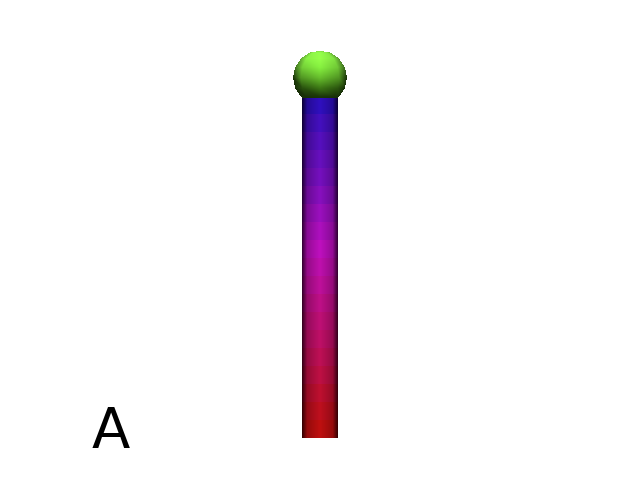
|
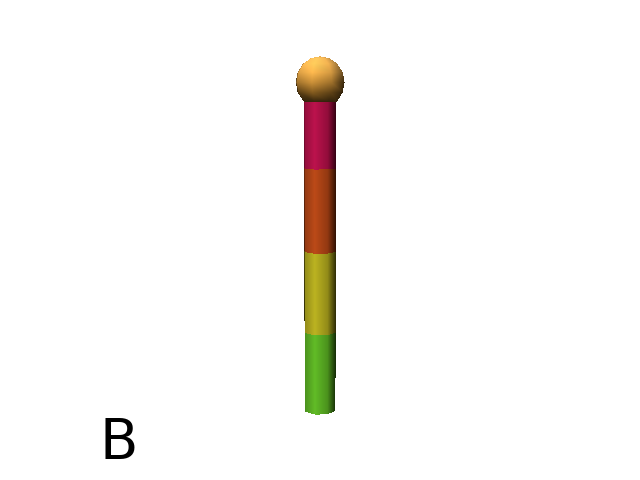
|
Advanced rotation primitives¶
There are other primitives that can be used to rotate the Turtle.
TurnAround or |, turn the Turtle for 180° around the Up vector. It produce the same result as +(180) or (-180)
Axiom: Frame(2) | Frame(2)
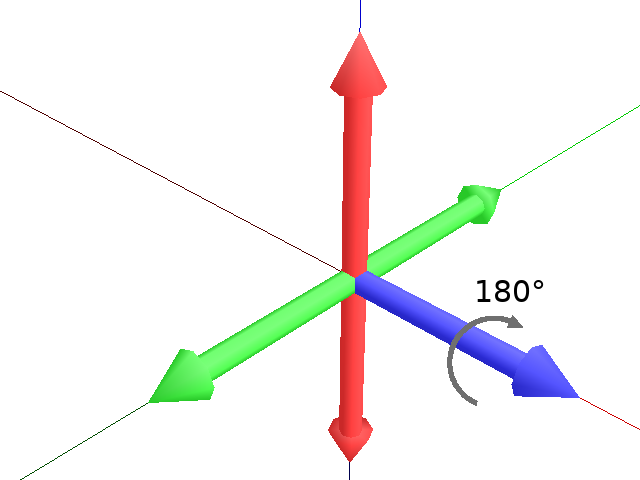
|
Requests¶
These methods allow to get some informations about the Turtle and store it in variables in order to use it after. Except GetFrame, it all can take three floats or one vector in arguments. If done, arguments are filled with values requested.
- GetPos or ?P, collect the Turtle’s Position vector informations.
- GetHead or ?H, collect the Turtle’s Head vector informations.
- GetUp or ?U, collect the Turtle’s Head vector informations.
- GetLeft or ?L, collect the Turtle’s Left vector informations.
- GetRight or ?R, collect the Turtle’s Right vector informations.
GetFrame or ?F, collect the Turtle’s Frame vector informations. It can take four vectors in arguments and fill it with the Position vector, the Head vector, the Up vector and the Left vector.
Rewriting shapes¶
To clear the viewer, the primitive None can be written in the Axiom part.
Axiom: None
Work in progress